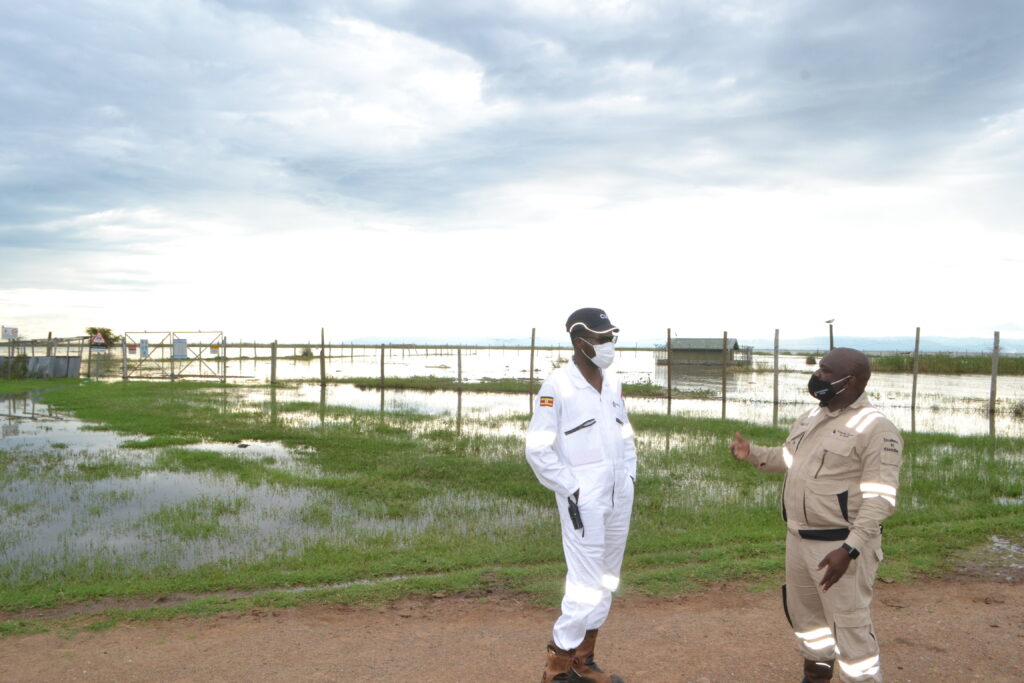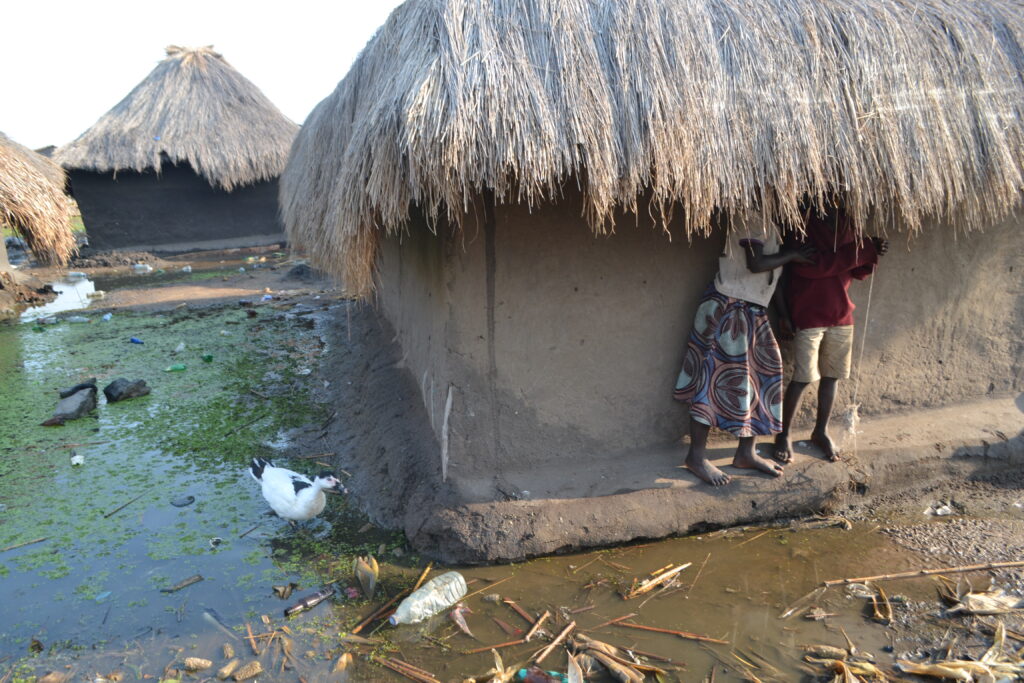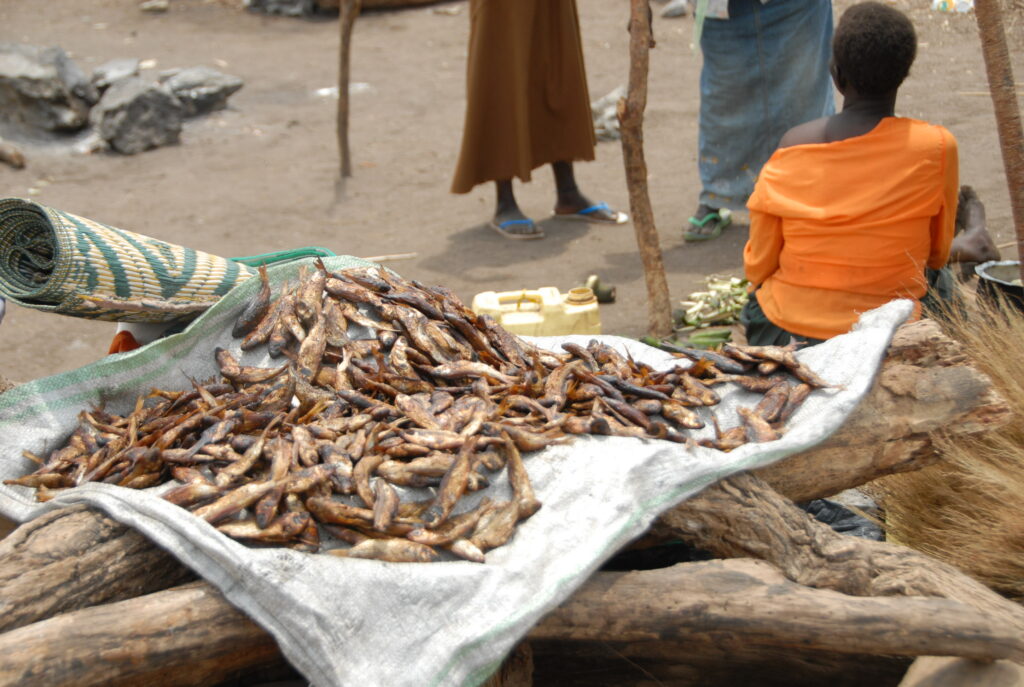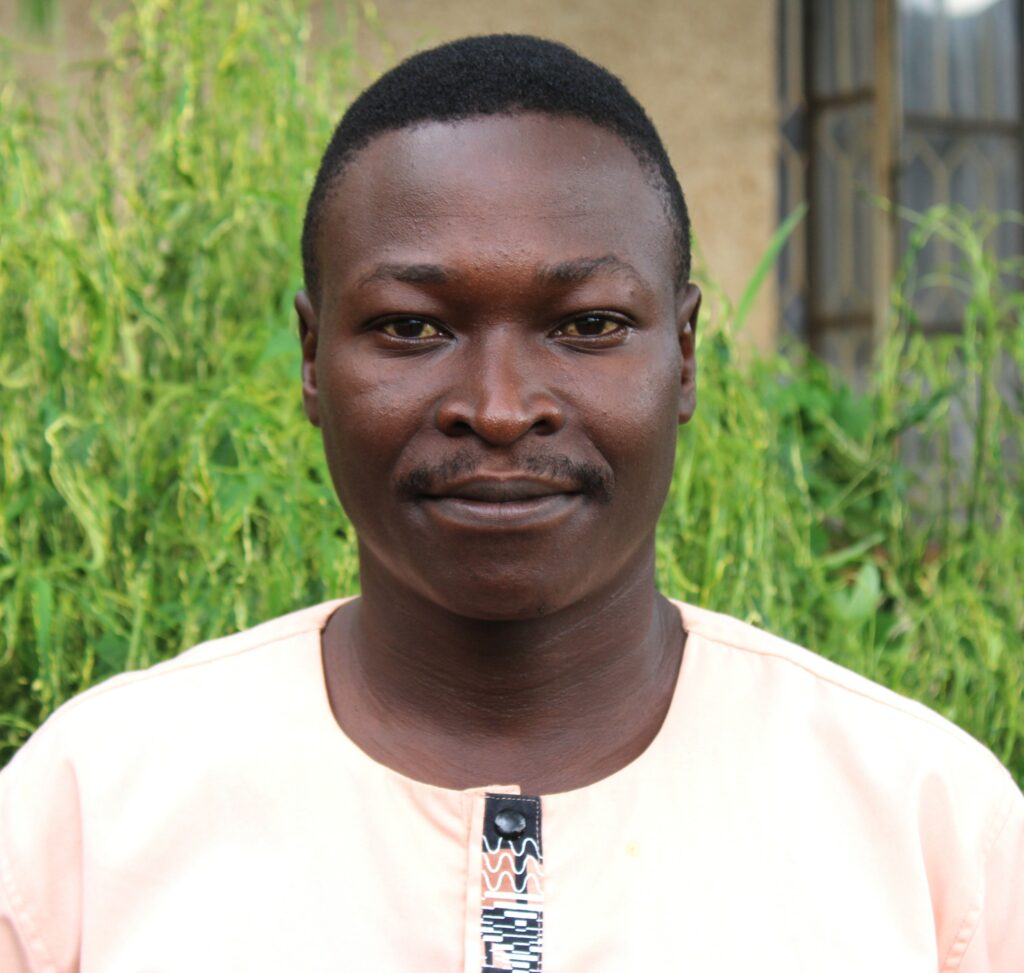Joseph Isingoma, a student of environmental science at Kyambogo University and a resident of Biiso sub-county, is very concerned that effects of climate change characterised by unpredictable drought and rainfall patterns is becoming common in Buliisa district, in western Uganda.
Isingoma observes that the area residents were becoming too vulnerable to such vagaries in the weather patterns arising from unfavourable climatic conditions, often linked to extreme human and industrial activities.
“The community is unable to adapt or to mitigate the effects of the changes. That is why Buliisa is too much affected and the people are homeless after their houses and crops were destroyed by the rising water levels of Lake Albert. They cry of hunger and are forced to live with the effects. They need to be prepared for the next occurrences by planning ahead and staying vigilant incase floodwater comes,” he explained to the Albertine Journal in an interview.
Uganda’s warming trend has increased further by 0.5 to 1.2 degrees Celsius for lowest and 0.6 to 0.9 degrees celsius for maximum temperatures, according to the Uganda Climate Change Vulnerability report.
With some models predicting an increase by 2 degrees celsius by 2030, and as Uganda embarks on its oil project in the area, it may harm livelihoods- agriculture, cattle and increase disease and pest risk, nervous residents say.
Uganda has plans to plant 40 million trees with 2,500 already planted at Uganda Petroleum Institute and plans for 4,000 more at the Kabaale Industrial Park in Hoima district, western Uganda afoot to stave off greenhouse gasses that might be released by the fossil project in the Albertine Graben.

Activists have recently said that though oil is here to stay, it should be mined while ensuring environmental sustainability.
Analysis of value and risk shows that if climate transition risks are not managed appropriately, oil production could damage Uganda’s economic resilience over a long term.
The global warming temperature was 1.1 degrees celsius above pre-industrial levels in 2021 with predictions that temperatures will rise above 1.5 degrees celsius, above pre-industrial level in the following years.
Moses Semahunge, an ecologist with Bulindi Chimpanzee and Conservation Project (BCCP) told The Albertine Journal on June 02 that climate change is real and the biggest threat ever.

This, he said, is after altered climate patterns noticeable from the changes in seasonal rainfall-planting, harvesting, in tree growth and wind directions.
He said it’s time to prioritise sustainable management of grasslands, wetlands and forests which are known to increase the resilience and reduce the vulnerability of people and the environment to climate change.
While speaking at an event in June last year, Fred Lukumu, the Buliisa district chairperson said the area needs expanded access to drought resistant crops and teaching people whose livelihoods have been or will be impacted by a changing climate.
Lukumu like other local leaders had in the past faulted the government for neglecting the area when it comes to helping people cope with climate change related disasters such as flooding.
“There is a need for a comprehensive study of the entire ecology of Buliisa,” he added.
Factors which increase vulnerability to the effects of floods in Buliisa are cultural and socio-economic.
The main economic causes that emerge are poverty, which leads to residents constructing weak houses using local materials, population pressure, and lack of access to social services and critical infrastructure.
The shortage of land has influenced negative land use. Semahunge says the area needs to invest in indigenous knowledge of knowing that the banks of the lake are prone to floods and advise residents not to build houses next to the banks.
Cultural beliefs, The Albertine Journal understands, plays a big role in dwellers’ vulnerability. Our investigations show that residents continue to settle in flood-prone places because they claim to be their ancestral homes.
For example, Javian Katusabe said he was forced to abandon staying in Kampala City in Central Uganda and return to Buliisa since his parents and grandparents were buried in Kigwera sub-county.
“I can’t go anywhere else but stay here and take care of my parents’ graves and ensure no one encroaches on our land and this is where all of us will be buried.”
Michael Businge, an environmentalist, says such people need knowledge about early warnings and effects of climate change, adding that the government also needs to give viable options.
“Previously we were warned of too much rain and it came. We were warned about too much sunshine but we were not given viable solutions,” says Sarah Kabaramagi, a resident of Wanseko whose house was submerged by rising waters of the Lake.
Lukumu said there is need to sensitise residents on the sustainable utilisation of the lake, noting that destructive fishing practices damage the lake’s ecology including essential habitats and vegetation.
The lake, which contributes at least 30% of the national fish production, faces increased human activity around and within it, especially oil and gas exploration, and this may pose threats to its well-being and its diverse fish communities and fishing.
Studies show that destruction of the lake habitats reduces its capacity to sequester carbon and diminish its ability to sink greenhouse gases.
Some gases in the earth’s atmosphere act a bit like the glass in a greenhouse, trapping the sun’s heat and stopping it from leaking back into space and causing global warming, according to a recent report by the European Commission.
The changing fishing practices
Fred Busobozi, 70, a resident of Wanseko who is perplexed by the current poor methods of fishing which he was told about by an official from the ministry of agriculture, animal industry and fisheries are destructive like use of explosives, wants the Kikweru period reinstated.
He said this was one of the traditional ways of conserving the lake, the spell when the moon would cast its light upon the lake waters, a local tradition that used to take place in August. This was a time when fish become less active, and the fisher-folks cease their activities.
“This prompted us to remove boats and nets, observing a fishing holiday lasting two weeks,” Busobozi who has since abandoned fishing and depends on his children-after they started battling low fish catches due to uncontrolled overfishing, adds.
In preparation for this period of reduced fishing, fish were selected and kept. These could be preserved through sun-drying and salting, serving as a nutritional standby during fish scarcity in Kikweru period.
Busobozi said traditionally Bugungu had limited number of boats, in stark contrast to today, where fishermen are owning close to 50 engine boats.
There also is encroachment from the neighbouring DR Congo due to lack of demarcation on how to use the Transboundary Lake.
He said despite enforcements against illegal fishing by Uganda People Defense Forces (UPDF) the situation has become worse due to corruption of the enforcers who are also involved in fishing, an allegation UPDF refutes.
He attributes this to high demand for fish due to population pressure and un-employment where everyone is forced to throng the lake to make ends meet and make quick money.

He said in the Kiweru period, the use of Enkasi (wooden stick), was used to move boats, restricting fishing to the central region of the lake.
“With the influx of other tribes, fishing has expanded to the lake’s limit. This has resulted in the depletion of the lake. We did not use lights to catch Mukene (Silver fish). Traditional fish breeding areas were prohibited,” he added.
Semahunge says Buliisa being a renowned cattle grazing area and with grazing known for emiting greenhouse gases-the primary driver of climate change, there is a need for sustainable animal grazing.
Besides fishing, Bugungu are predominantly keepers of cattle- livestock, the renowned producers of methane from fermentation of feed in their stomachs, which is then belched out into the atmosphere.
Livestock urine and dung deposition also contain a high concentration of nitrous oxide, a greenhouse gas.
Although there is no study about Buliisa’s methane emissions from livestock, global estimates put methane emissions from livestock at about 2.2 billion tonnes of carbon dioxide equivalent, accounting for about 80% of agricultural methane and 35% of the total anthropogenic methane emissions.
According to a research published on March 12, 2024 by researchers from Harvard University, New York, Leiden University, and Oregon State University, livestock is said to emit about 75% of agricultural nitrous oxide.
According to the report, 92% of experts recommended a reduction of emissions from the livestock sector to reduce the risk of temperatures exceeding 1.5 degrees celicious (87%) or 2 degrees celicious (85%).
This calls for a reduction on meat production and consumption or to embrace sustainable livestock rearing methods.
Semahunge said Buliisa being a livestock rearing corridor needs rare breeds that yield much milk and beef.
He said from the Bugungu (local breeds) there is need to make them adopt improved ones where instead of having a herd one has 10 livestock breeds which are more beneficial.
Semahunge, who calls for investments in safe and sustainable housing and regularising land use, adds that Uganda lacks a climate mobility framework that addresses rights of climate change affected people and resettling them.
This comes as the International Displacement Monitoring Centre, showing that Uganda has the highest number of internally displaced people due to natural disasters.
In 2019, there were 95,000. Disaster preparedness and response remains low and a challenge to the government despite the Office of the Prime Minister acting in most cases when a catastrophe strikes.
“Once the policy is in place people will not run into confusion due to lack of a clear rescue policy and this should cater for a plan to bring them back to their original places.”
Others say the law or policy would allow abandoned victims of climate change to sue in case the government fails to act.
Hajji. Bruhani Kyokuhaire, Bunyoro-Kitara Kingdom advisor on culture told The Albertine Journal on June 7 that in the absence of the lack of government plan people should consider life first.
“Once water comes, people should report to the authorities and leave to safer places. They have to mark and see when water comes where it reaches and this must make them learn it is a flooding area and be mindful of where to construct,” he added.
Better farming methods
Businge says Buliisa has unfavourable soil conditions and irregular rainfall patterns which pose a challenge to farmers.
He said farmers need to adopt alternative approaches of farming such as agroecology techniques which are vital for enhancing resilience and help the area recover from effects of climate change.

He defines agroecology as a method in agricultural practices that promote sustainable and ecologically friendly farming methods.
They include crop rotation, integrating livestock into farming, diversification of crop species, using organic farming methods such as use of organic fertiliser, embracing natural pest control, mulching and green cover cropping.
Businge told The Albertine Journal that these will help people feed their families, lead to less carbon footprint, and also improve nutrition through chemical free nourishments and improve the well-being of the people.
He said there is a need to address food security in events where the population is increasing with farming practices that can be native to the area.
For example, he said residents along the slope should be taught how to plant and till along the gradient such that if it rains the crops don’t runoff especially in hilly areas of Biiso and Butiaba.
“When there is such a steep gradient one can use better farming methods and also embark on early planting of leguminous crops and inter-cropping so that incase one fails the other can germinate,” Businge noted.
He said terraces should be prioritised by farmers on the steep hillside to retain surface water that could otherwise run off the slope.
Studies show that usually not all is gloom for farmers in flooded areas. In South and South East Asia and Pacific, it is estimated that an area of more than 13 million hectares of agricultural land is prone to floods.
These occur mainly in India, Bangladesh, Burma, Thailand, Vietnam and Cambodia and are caused primarily by an accumulation of rainwater, river discharge to basins forming deep-water bodies, and tidal movements.
Over the years the aforementioned countries have developed a unique way of life and adapted a complex farming system involving crops, livestock and fisheries that can accommodate this natural disaster.
In a paper: developing farming systems and best practices for flood-prone areas, the authors said indigenous knowledge is needed.
Some farmers plant deep-water rice in the back swamps and grow a partially irrigated rice crop on higher land.
In Kandal province in Burma, farmers combine crops such as maize with deep-water rice, while some plant sesame and mung bean in rotation with floating rice, and in Prey Veng, attempts are made to replace the standard floating rice fallow pattern with two short-duration modern rice varieties, as in the case of Vietnam.
Businge and other ecologists told The Albertine Journal that basically, two strategic options exist to improve the productivity of areas that enjoy flood protection.
Quoting the same paper, he said one, is the engineering approach where embankments, dykes, sluices, among others, are erected, and the other is agronomic in nature and involves the introduction of new farming systems such as high yielding varieties that would mature and be harvested prior to the onset of floods.
Another would be to combine the two and this would give a wider choice to farmers.
Lukumu said all this needs the intervention of the government through allocation of resources.
He also cautions farmers living in steep gradients to embrace farming practices that preserve water in the soil such as mulching, digging of water conservation trenches, planting drought-resistant crops and helping to acquire small-scale irrigation.
He said there is need to improve the area’s drainage system, construct flood defences and de-silting of rivers to stop them from busting banks.
Sam Cheptoris, the minister of water and environment said they are aware that Uganda is likely to experience more floods due to its downstream location, they are liaising with the office of the Prime Minister-disasters desk to match the challenge at hand.
Prime Minister, Robinah Nabbanja who visited the area recently to commission the newly refurbished Butiaba Health Centre III which was swallowed up by floods, said the government will ably arrest the climate change threat as it has done with other disasters before.
This story was published with the support of a modest stipend from Minority Rights Group International



